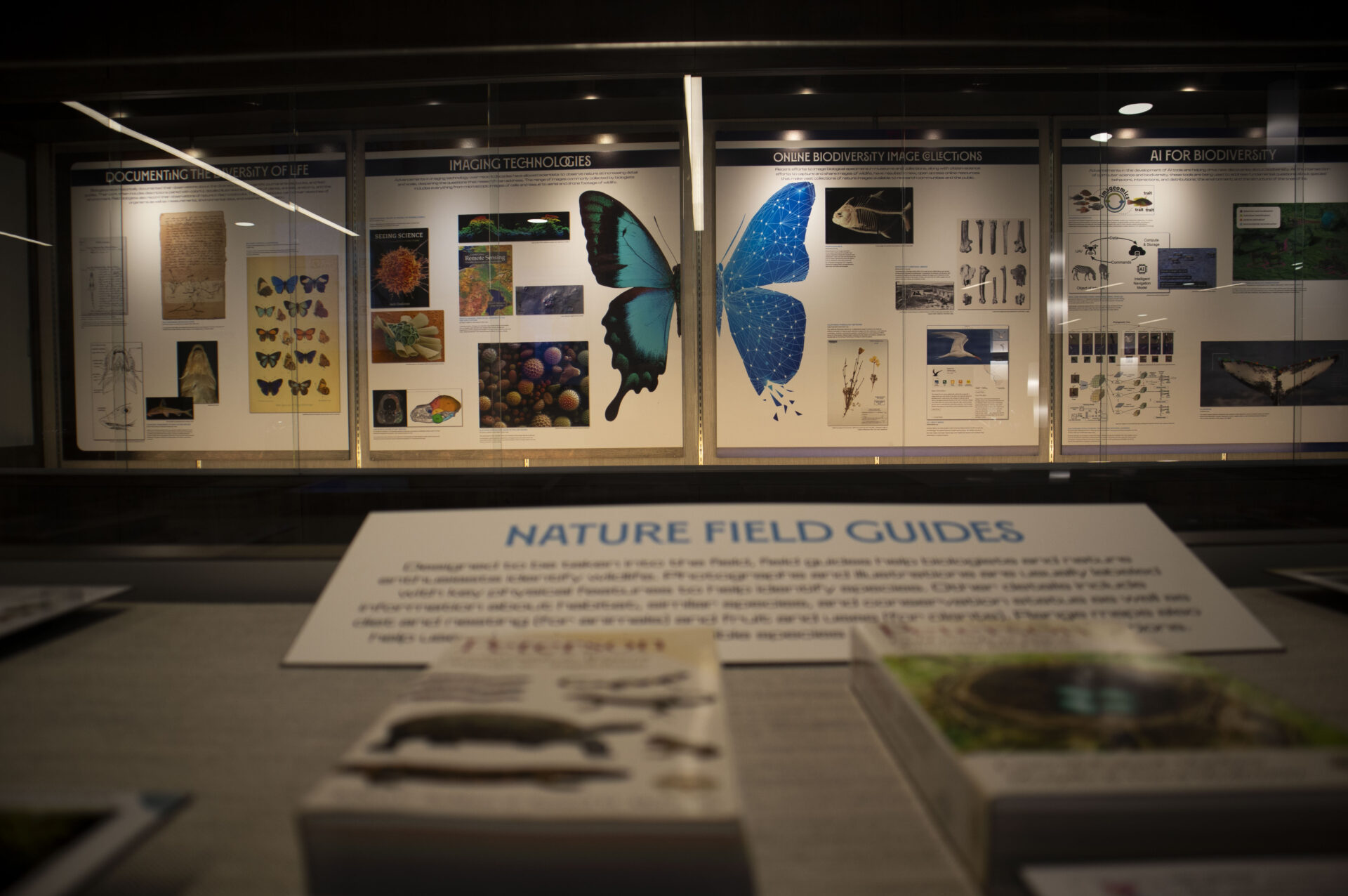An ongoing exhibit at UC Irvine’s Science Library, “Biodiversity Illuminated: From Images to AI,” is on display from July 2025 to February 2026, showcasing how scientists document biodiversity.
As visitors enter the Science Library, the exhibit’s six sections stretch along the second floor, featuring hand-drawn sketches, historical photos, x-rays, scans and modern machine-learning tools.
The exhibit opens with the meticulous work of early scientists, whose journals and field guides capture the delicate details of flora and fauna. For example, Robert C. Stebbins’ “Field Notes on Keeled Earless Lizard” includes a rough sketch of the lizard alongside his own handwritten observations.
Documenting biodiversity is essential for understanding how ecosystems function and change over time. Before digital tools and artificial intelligence (AI) existed, scientists relied on detailed field drawings and written observations to record traits that might otherwise be lost.
Data Curation Librarian Wasila Dahdul said she designed the layout chronologically, starting with preliminary illustrations from more than a century ago and moving through the internet age to the introduction of AI in the 21st century.
“[Society had] moved on to more technologically advanced image technologies and onto AI that’s able to do similar things that humans can do, but at a much broader scale,” Dahdul told New University. “So that was sort of the arc of the exhibit, going from the historical perspective to the modern AI.”
Dahdul earned her bachelor’s and master’s degrees in biology from California State University, Fullerton and her Ph.D. in biology from the University of Pennsylvania. She drew on this research background to determine which images to include in the exhibit.
“I’m pretty familiar with the types of data that biologists collect when they ask those types of questions and I’m familiar with the databases that contain images and information,” Dahdul said.
From concept to installation, the exhibit took about six to eight months to complete. Dahdul said that close collaboration between the librarian, exhibits team and communications staff made the project possible.
“We may come up with an idea and [the exhibits team] will help us flesh out the idea, collect the materials, and the librarian will come up with a list of those materials,” Dahdul said. “The artistry really comes in from the exhibits team. You know, they look at each item, they think about how to display it, they think about the story and the layout.”
With growing student interest in AI, the curators highlighted how new AI tools are reshaping biodiversity research, enabling discoveries that were previously impossible. These tools help scientists study how different species interact with their environments by detecting subtle patterns that earlier technology would have missed.
While AI tools speed up the research process, it still depends on human-made illustrations as source data, as reflected in the exhibit.
“[Current graduate students] are taking field notebooks with them, where they’re hand-drawing their observations, writing things down on paper,” Dahdul said. “I didn’t want to give the impression that we’re leaving behind illustrations or the field notebooks; they’re still very much relevant and being used, despite AI being the big story of the day.”
As students leave the exhibit, Dahdul hopes they walk away with more than just an appreciation for the displays.
“We wanted to make it an exhibit where in a sense people can interact with the tools,” Dahdul said. “It’s sort of an exhibit where you can walk away with something and hopefully a new tool, a new habit, as you’re going for hikes might contribute to these projects.”
Those interested in exploring this or other library exhibits on campus can browse UC Irvine Libraries Exhibits.
Ennes Kahf is a Features Intern for the fall 2025 quarter. He can be reached at ekahf@uci.edu.
Edited by Aditya Biswas and Joshua Gonzales.

